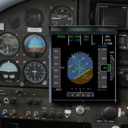27C3 - Version 1.6.3
27th Chaos Communication Congress
We come in peace
| Speakers | |
|---|---|
|
|
Bernd Sieker |
| Schedule | |
|---|---|
| Day | Day 2 - 2010-12-28 |
| Room | Saal 3 |
| Start time | 20:30 |
| Duration | 01:00 |
| Info | |
| ID | 4145 |
| Event type | Lecture |
| Track | Science |
| Language used for presentation | English |
| Feedback | |
|---|---|
|
Did you attend this event? Give Feedback |
"Spoilers, Reverse Green, DECEL!" or "What's it doing now?"
Thoughts on the Automation and its Human interfaces on Airplanes

Getting the interfaces right to computers controlling complex and dangerous machines such as commercial airliners is crucial. I will present a successful accident analysis method and talk about interface design problems, ideas for solutions, methods for understanding causal control flow. There will be some spectacular aviation accident videos and stories of bad luck, bad design, bad decisions, and a hero that managed to turn a near-catastrophe into an accident without fatalities.
Getting the Interface right can be crucial.
So does an understanding of the underlying logic, and knowledge of correct procedures when operating complex devices.
Modern airliners are incredibly complex machines, no person can fully understand what is going on. This starts at simple things like fuel systems (e. g. the B777 has only two engines and three fuel tanks, how complicated can that be? Surprisingly so.) and goes on to autopilots, autothrottle systems, FADECs (Full Authority Digital Engine Control), Flight Management, Guidance and Envelope Computers (FMGEC), digital fly-by-wire systems, weight computations etc.
Apart from the largely unsolved problems of how to create software for these systems that is demonstrably extremely reliable (in commercial aviation we're talking about probablities of dangerous failures of 1 in a billion flight hours: testing just won't do), there is the underrated question of getting the interface right.
What to annunciate to the crew and when, and in which form? Some accidents and incidents are directly related to a flight crew being confused by the annunciations, or didn't know how to react properly to seemingly unrelated warnings. At other times, a pertinent and important warning is suppressed because another, ostensibly more important warning inhibited the other one.
I'll be talking about some accidents that we have analysed using Why-Because-Analysis (see http://www.rvs.uni-bielefeld.de/research/WBA/) in which the interface and the automation played a role. I will also be talking about some design principles to guide interface design and interactive safety.
